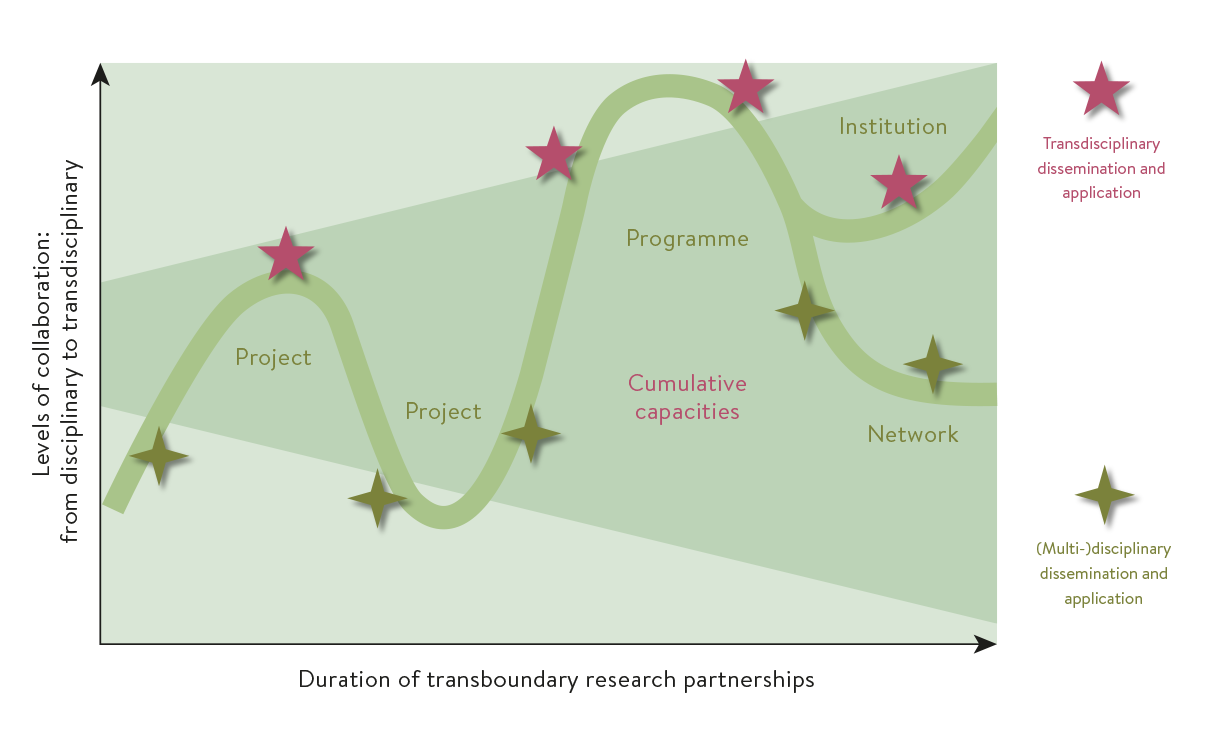Transboundary and intercultural research in partnership is challenging. This is particularly the case when cooperation takes place between rich and poor countries. This guide is based on 11 principles and 7 key questions. They aim to build research partnerships in the most constructive, balanced and results-oriented manner.
Click here to download the complete guide.
Click here to download the guide in French or German.
The 11 principles address
basic challenges and – offer
practical guidance. Applying these
eleven principles should support
the partners in building trust and
assuming mutual responsibility.
Click on numbers 1-11 on the left
for short animated videos and
testimonials on each principle.
The 7 key questions deal
with issues that can hinder
or facilitate meaningful cooperation
in different contexts. They make
it easier to understand the nature
and context of the partnership.
Click on numbers 1-7 on the right
for more details and graphics
on each key question.
Research in partnership gives rise to diverse forms of added value…
Research partnerships emerge when joint action promises more than isolated efforts, both on behalf of researchers (capacity building) and research itself (quality and impact). Joint research by partners from the North and South can generate added value on various levels, whether by producing new scientific findings or improved research methods.
...and is essential to address global issues.
Transfer of technology and knowledge “in one direction” is no longer the main purpose of partnerships between researchers from the global South and North. Combining various forms of knowledge is what gives rise to new insights capable of helping solve global and local challenges. Research in partnership requires collaboration on an equal footing.
Complex environmental conditions can act as a centrifugal force that impedes collaboration…
Enabling working conditions are key to successful research. It is critical to identify centrifugal forces that threaten the “cohesion” of many North–South partnerships. These may include the sometimes highly divergent agendas and interests of researchers. The lower standing of science in the global South or the low status of applied research within academia can further complicate matters. Diverging value systems or cultural differences, which hinder shared understanding, should not be underestimated either.
… and demand strategies to overcome them.
There are various things that research partners can do to counter these external and internal hindrances. Partners can act as bridge builders, working directly to increase the societal standing of research or to sensitise policymakers to their findings. Efforts to foster inner coherence within a partnership ultimately produce a sense of joint research “ownership” and responsibility, strengthening the personal initiative and self-determination of all participants. The 11 principles are designed to support this.
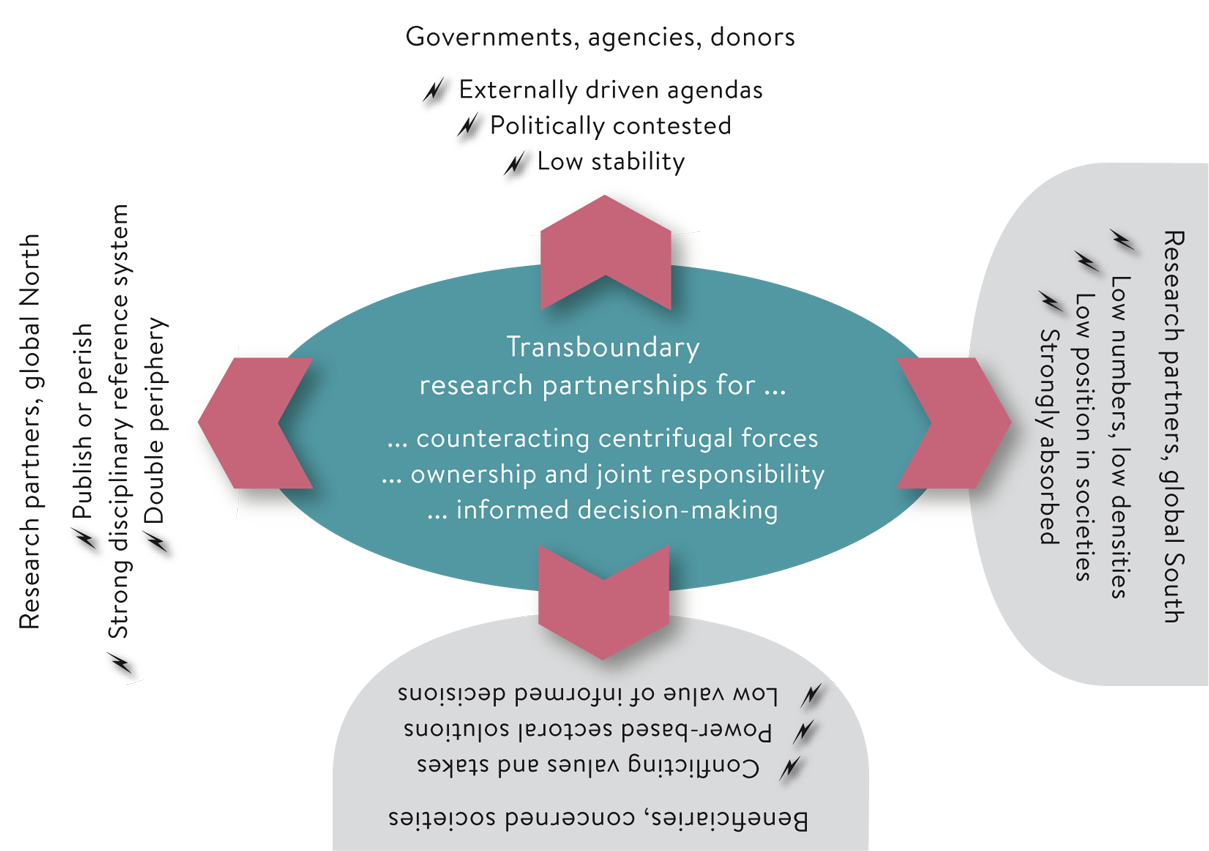
There are different forms of collaboration of varying intensity, …
In research partnerships that span cultural and geographic boundaries, trust and responsibility are centrally important values – but they cannot be established from one day to the next. And there are many forms and pathways of collaboration, such that the significance of each of the 11 principles will vary depending on the specific research partnership.
… which place different demands on a partnership.
Time must be considered first. Questions of responsibility will differ between a short-term project, a medium-term programme, and a long-term alliance. Partnership requirements stemming from the complexity of the research project must also be considered. While principles 1 (set the agenda together) and 3 (clarify responsibilities) are central in discipline-based project work, principles 2 (interact with stakeholders) and 4 (be accountable to beneficiaries) acquire importance in transdisciplinary and implementation-oriented programme work.
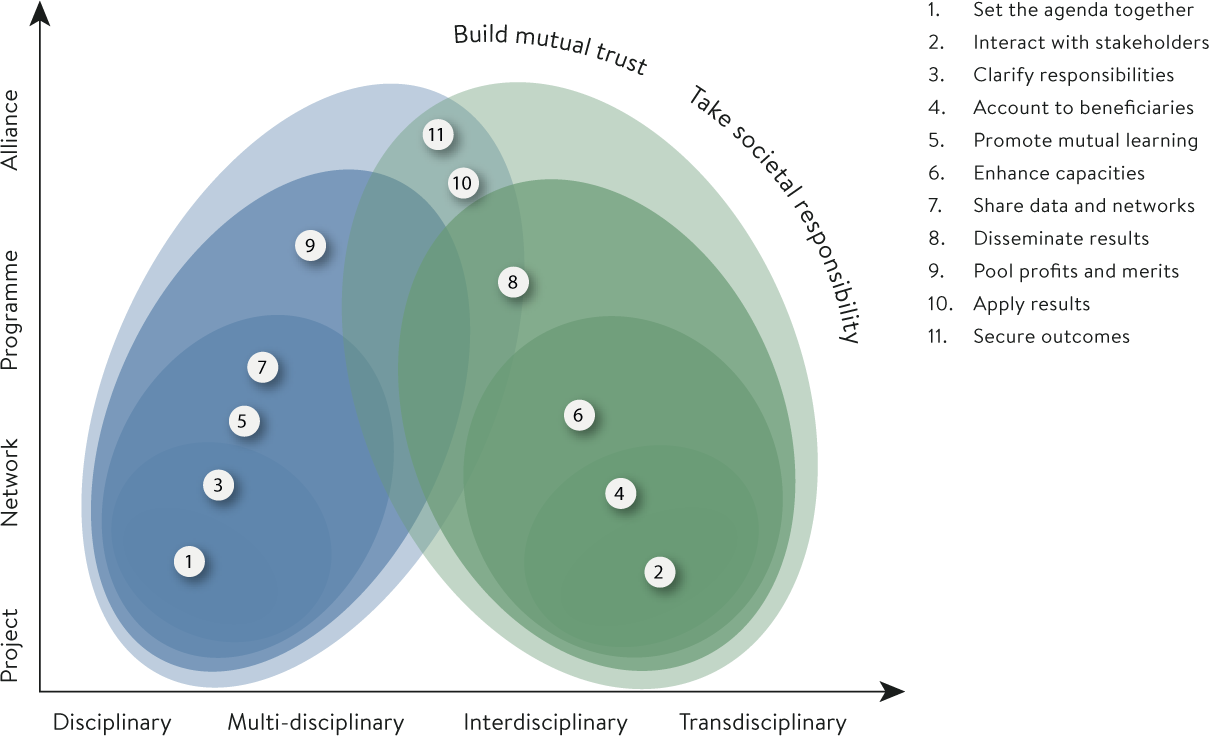
Transboundary research partnerships typically pursue multiple objectives, …
The potential added value of research in partnership lies (a) in the effect of new findings in practice (impact), (b) in improvements to research quality, and (c) in the establishment of individual and institutional research capacities (capacity). How do these three goals interact? Can we assume, for example, that improvement of capacity automatically leads to better quality research?
… which can give rise to conflicting goals.
Practical experience negates such assumptions. This is due to conflicting goals. Whereas impact goals require context-specific research insights, goals of research quality are measured according to their generalizability. The goals of research quality and capacity building also clash: The latter requires consolidation and concentration of knowledge, while aims of research quality put the emphasis on innovation. At the start of every research partnership, participants must ask themselves whether all three goals will be pursued simultaneously, and if so, how conflicting goals will be handled.
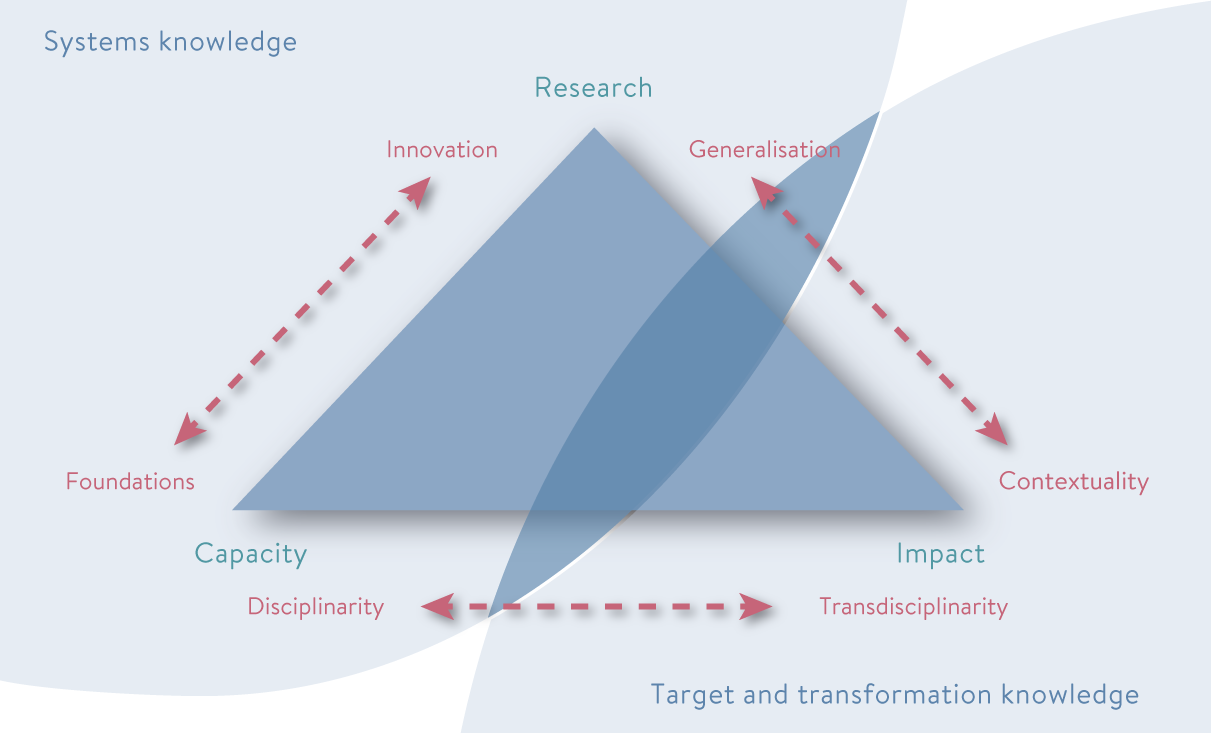
Action-oriented research requires dialogue and exchange, …
Impact-oriented research that also aims to meet scientific standards must involve various actors (stakeholders) extending beyond the narrower group of researchers. These include (1) interested segments of the research community, (2) commissioning agencies or funders, (3) the direct beneficiaries, and, not least of all, (4) the wider public.
…which is a task demanding careful consideration and planning.
Cultivating relationships with stakeholder groups is time-consuming and expensive, and requires communication and networking experience. This can overwhelm participating researchers, especially since the core business of research partnerships is knowledge generation, not primarily dissemination. For this reason, intermediaries play a key role. Scientific peers can help facilitate exchange with the wider scientific community, for example, while moderators can enable dialogue with end-user groups.
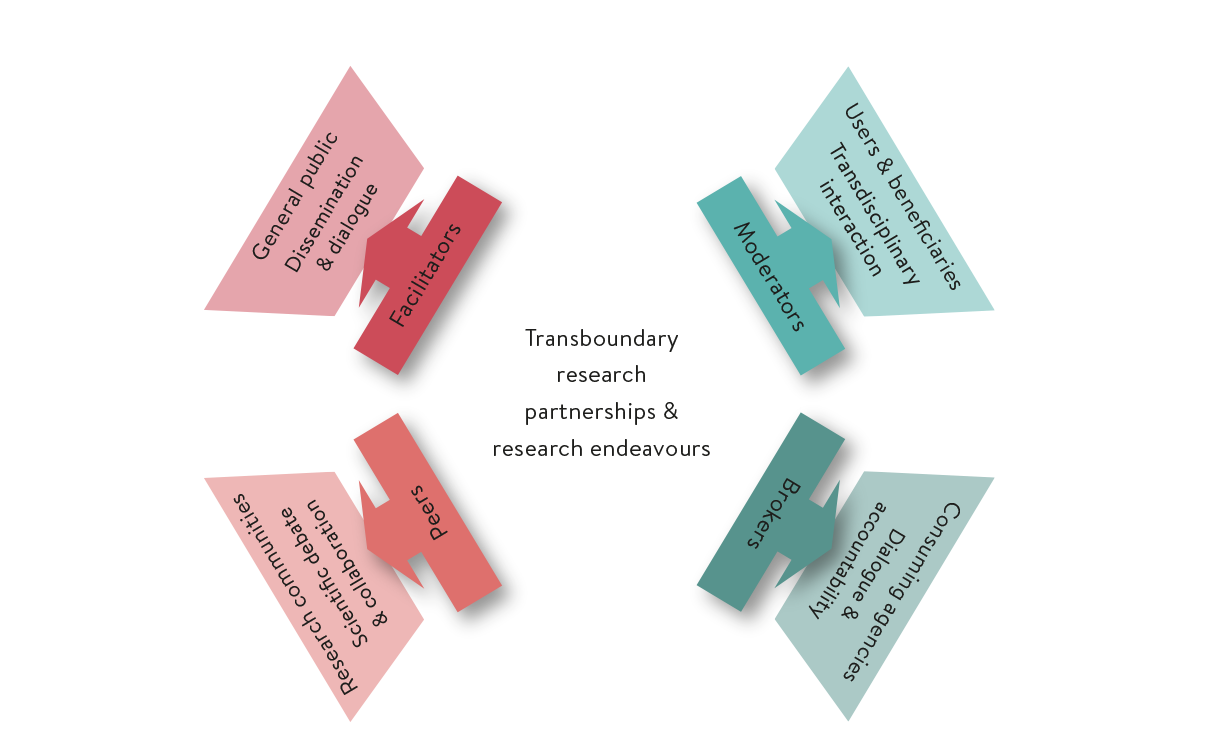
Research results are an output, not an outcome, …
There is no guarantee that generated knowledge will be used. Knowledge must be actively translated into action. Considered in sequence, research results are outputs that only become outcomes and impacts, in practice, by means of transmission of knowledge. The extent to which knowledge is ultimately channelled into action depends not only on how the knowledge transfer is organised, but also on how the research results are received and taken up in specific contexts.
… which is why the relevance of research results should be clarified.
In principle, only research that is demand-driven and solution-oriented can achieve relevant impacts. Depending on the research question, three types of knowledge are decisive in determining the relevance of research activities. First is systems knowledge, which analyses the interrelations and dynamics of a given problem; second is target knowledge, which identifies the bases for a societal consensus; third is transformation knowledge, which determines possible pathways to solutions. Research projects aiming for greater relevance must consider all three knowledge types.
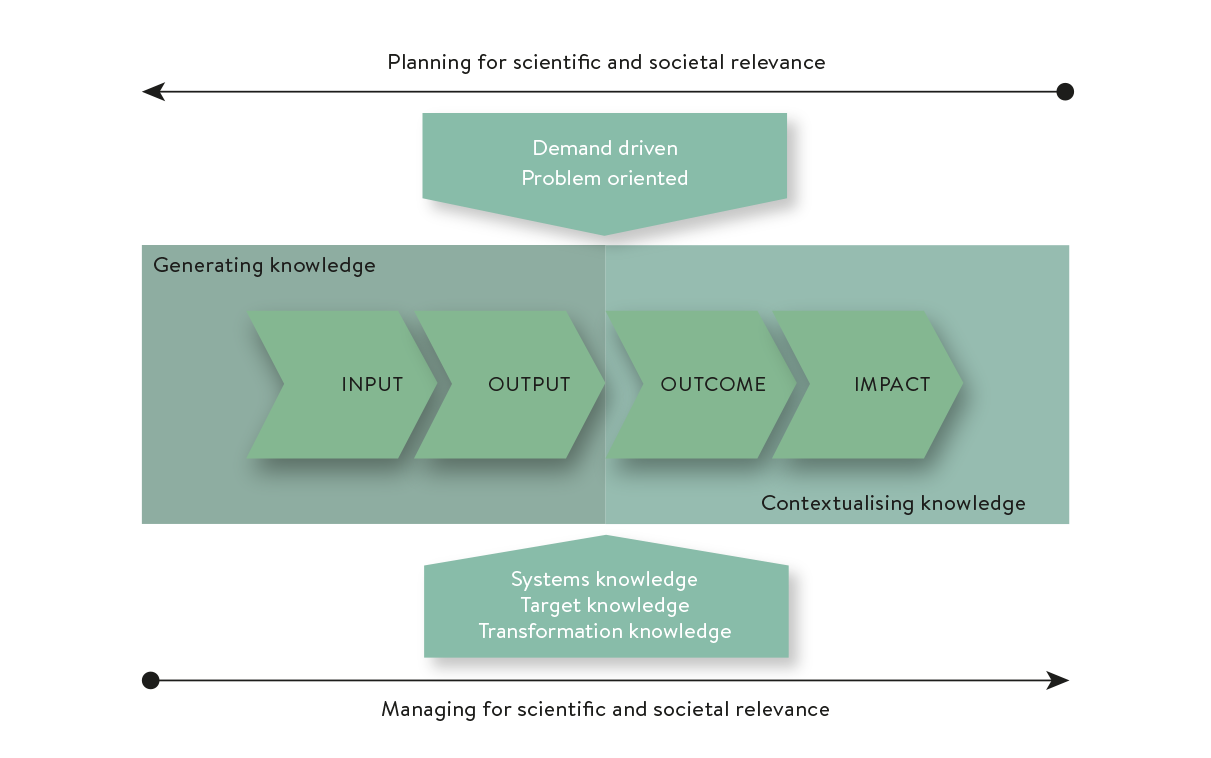
The path of transformation knowledge is long and beset with obstacles...
Research in partnership that sets out to help solve problems in difficult contexts is an ambitious endeavour. The way is long when it comes to translating new knowledge into action and ultimately having an impact. Transdisciplinary research demands both scientific focus (disciplinary or interdisciplinary, depending on the phase) and correctly timed interaction with stakeholder groups.
… and should lead to institutional consolidation.
Partnership-based research projects confront a number of planning tasks. Among other things, organisers must decide on project cycles and when and how individual and institutional capacities can be built. Both are crucial to consolidating research results. Long-term research programmes are crucial to this goal.
